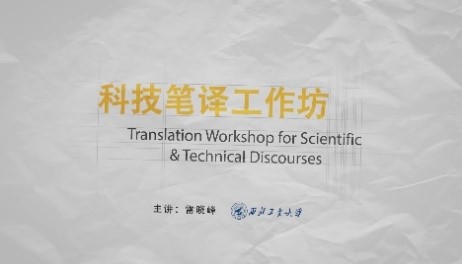
当前课程知识点:3ds Max: A Quick Start from Zero to One > Chapter 5: Basic Skills of Animation > 5.2.2 Making Animation More Interesting Principle 1: Time and Space > 5.2.2
返回《3ds Max: A Quick Start from Zero to One》慕课在线视频课程列表
返回《3ds Max: A Quick Start from Zero to One》慕课在线视频列表
让动画更有趣的法则1
时间和空间幅度
上一讲
我们介绍了
3ds Max动画制作模块
不知道你
是否已经准备好制作动画了
有没有迫不及待了
别急
这一讲
为你介绍
动画制作最重要的理论
时间点和空间幅度
了解了这些
相信你在制作时
就不会无从下手了
一
时间点和空间幅度
迪士尼的动画大师
格里穆·乃特维克
曾经说过这样一句话
动画的一切皆在于
时间点和空间幅度
由此
我们学习动画
就必须要先了解
这两个最基础的理论
时间点和空间幅度
所谓时间点
就是物体完成一段动画
所用的时间长度
而在关键帧之间
发生的动作方式
我们称为空间幅度
我们用
最经典的弹跳小球来举例子
当一个球下落到地面时
敲击到地面的点
就是动作的时间点
而下落的动作方式
就是空间幅度
空间幅度越密集
球运动速度就越慢
空间幅度越稀疏
速度就越快
再举个例子
假如一个小球
我们让它以
每秒25帧的速度
在2秒内
从左侧滑动到右侧
从左侧到右侧
所需的2秒时间
就是时间点
而移动时
所呈现出的运动轨迹
就是空间幅度
那么时间点和空间幅度
在画面中
会呈现怎样的效果呢
时间点
首先我们先来聊聊时间点
当小球从左弹出时
球每次接触地面
弹跳效果
会在力作用下逐渐抵消
因此在动画中
每次接触地面的时间
会呈现出
一种递减的节奏效果
其次
一个下落的球
如果落到地面的时间很长
所反映出来的画面
就有一种很轻的感觉
像气球
如果下落时间很短
所反映出来的画面
就会有一种重量感
这就是时间点的魅力
空间幅度
现在让来我们看看
在相同时间和距离中
改变空间幅度
会获得怎样的效果
显示模型的重影效果
可以看到
当空间幅度较为均匀时
会得到一个匀速移动的小球
改变空间幅度
让两头更密集
小球便会慢入慢出
会获得一个
加速再刹车的小球效果
我们称为缓动
后续我们会单独讲解
所以
合理控制好
时间点和空间幅度
可以在动画中
表现出物体的重量感
移动速度
所用材料
甚至能间接表现出
物体的性格特征
让你的动画更有趣
二
关键帧
细分帧
和中间帧
说到这里
那如何在3ds Max中
控制时间点和空间幅度呢
别着急
我们还需要回忆几个
前边讲过的概念
关键帧
中间帧和过渡帧
还是一段小球落下的动画
我们将记录
球运动开始和结束的地方
或者说改变对象方向的
关键性动作
就是我们前面所说的
关键帧了
根据画面运动的
速度和节奏
计算机会自动
在每个关键帧中间
进行补帧处理
让画面连贯起来的帧
我们称为中间帧
有时
关键帧之间会有卡顿
或想为动画增加更多细节时
就需要在两个关键帧之间
加入细分帧
获得更好的动画效果
这个细分帧我们称为
过渡帧
在角色动画中
过渡帧起到了重要的作用
不但可以
增加动画的喜剧效果
还可以彰显角色的个性
在后续的角色系列课程中
我们也会着重讲解
三维动画的制作方式
节约了我们很多时间
让我们
不用像传统手绘动画那样
去一张张绘制动画
我们只需要
将关键动作记录为关键帧
在适当的时候加入过渡帧
计算机会通过插值运算
将中间的动作进行补帧处理
获得最终的动画效果
是不是觉得突然有点小幸福
好了
让我们把前面的理论
做一个总结
关键帧控制动画的时间点
中间帧控制动画的空间幅度
动画都是遵循于这个原理
学会控制好他们
就能让你的动画生动有趣
-Fast Understand of 3ds Max,Starting Your Virtual Journey
--Preface
-Preface
-1.1 How to get 3ds Max
--1.1 02
-1.1
-1.2 Introduction to the Interface of 3ds Max
--1.2 01
--3ds Max
-1.2
-1.3.1 Project Preparation 1: Set Up Project Folder
--1.3.1
-1.3.1
-1.3.2 Project Preparation 2:Initialization Settings
--1.3.2
-1.3.2
-1.4.1 Opening and Saving Files
--1.4.1
-1.4.1
-1.4.2 Basics Operation
--1.4.2
-1.4.2
-1.4.3 Advanced Operation
--1.4.3
-1.4.3
-1.5 General Hotkeys
--1.5
-1.5
-1.6 Creating Geometric Primitives
--1.6
-1.6
-2.1 3D Modeling Overview
--2.1
-2.1
-2.2 Three Useful Modeling Methods
--2.2
-2.2
-2.3 Boolean Modeling
--2.3
-2.3
-2.4.1 Spline Modeling 1:Spline Modeling Overview
--2.4.1
-2.4.1
-2.4.2 Spline Modeling 2: Modeling From a Spline
--2.4.2
-2.4.2
-2.4.3 Spline Modeling 3:How to Edit Spline Objects
--2.4.3
-2.4.3
-2.5.1 Polygon Modeling 1:Polygon Modeling Method
--2.5.1
-2.5.1
-2.5.2 Component Selection Techniques
--2.5.2
-2.5.2
-2.5.3 Polygon Modeling 3: 16 Polygon Modeling Commands
--2.5.3
-2.5.3
-2.5.4 Polygon Modeling 4: Subdivision Modeling
--2.5.4
-2.5.4
-2.5.5 Polygon Modeling 5: Attaching and Detaching
--2.5.5
-2.5.5
-2.6.1 Advanced Modeling Skills 1:“Stereoscopic” Modeling Method
--2.6.1 01
-2.6.1
-2.6.2 Advanced Modeling Skills 2:Box Modeling Method
--2.6.2
-2.6.2
-2.6.3 Advanced Modeling Skills 3:Deconstruction Modeling Method
--2.6.3
-2.6.3
-2.6.4 Advanced Modeling Skills 4:Problems to be Considered in Modeling
--2.6.4
-2.6.4
-3.1 Rendering
--3.1 02
-3.1
-3.2.1 Render Your First Work
--3.2.1 02
-3.2.1
-3.2.2 Arnold Render Set Up
--3.2.2 01
-3.2.2
-3.2.3 Introduction to the Arnold Renderer
--3.2.3
-3.2.3
-3.2.4 Arnold Renderer 1: Sampling
--3.2.4 02
-3.2.4
-3.2.5 Arnold Renderer 2: RayDepth and Filtering
--3.2.5 02
-3.2.5
-3.3.1 What is Light?
--3.3.1 02
-3.3.1
-3.3.2 Light and Color
--3.3.2 02
-3.3.2
-3.3.3 Light and Shadow
--3.3.3 02
-3.3.3
-3.3.4 Produces Soft Shadows and Fast Shadow
--3.3.4 02
-3.3.4
-3.3.5 Six Types of Lighting
--3.3.5 01
-3.3.5
-3.4.1 Arnold Light Types
--3.4.1 01
-3.4.1
-3.4.2 Arnold Light Parameters
--3.4.2 01
-3.4.2
-3.4.3 Color Temperatures and White Balance
--3.4.3 01
-3.4.3
-3.5.1 Three-point Lighting Method
--3.5.1
-3.5.1
-3.5.2 Indoor Light Lecture 1: Make a Simple Night
--3.5.2
-3.5.2
-3.6.1 Advanced Skill 1:Rendering Tips
--3.6.1
-3.6.1
-3.6.2 Advanced Skill 2:The Normals and the Smooth Group
--3.6.2
-3.6.2
-4.1 Learn About This Chapter in Four Minutes
--4.1
-4.1
-4.2.1 How to Open the Material Editor?
--4.2.1
-4.2.1
-4.2.2 Using Physical Materials
--4.2.2
-4.2.2
-4.2.3 Three Assistants of the Material
--4.2.3
-4.2.3
-4.2.4 Create a Simple Material
--4.2.4
-4.2.4
-4.3.1 Using maps to Creat Different Looking
--4.3.1
-4.3.1
-4.3.2 Bitmap Node:A Small Node With Virtues
--4.3.2
-4.3.2
-4.4.1 UVW Mapping Method 1:Methods of Locking the Map
--4.4.1
-4.4.1
-4.4.2 UVW Mapping Method 2: UV Overlays
--4.4.2
-4.4.2
-4.4.3 Unwrap UVW 1: Basic of Unwrap UVW Modifier
--4.4.3
-4.4.3
-4.4.4 Unwrap UVW 2: Projection
--4.4.4
-4.4.4
-4.4.5 Unwrap UVW Part 3: Powerful UV Editor
--4.4.5
-4.4.5
-5.1 Animation Overvie
--5.1
-5.1
-5.2.1 3ds Max Animation
--5.2.1
-5.2.1
-5.2.2 Making Animation More Interesting Principle 1: Time and Space
--5.2.2
-5.2.2
-5.2.3 Making Animation More Interesting Principle 2: Slow Motion (slow-mo)
--5.2.3
-5.2.3
-5.2.4 Making Animation More Interesting Principle 3: Squash and Stretch
--5.2.4
-5.2.4
-5.3.1 Animation Technique 1: Parent-Child Relationship
--5.3.1
-5.3.1
-5.3.2 Animation Technique 2:Loop Animation
--5.3.2
-5.3.2
-5.4.1 Techniques of Using the Camera
--5.4.1
-5.4.1
-5.4.2 The Safeframe Cannot Be Ignored in the Camera
--5.4.2
-5.4.2
-5.4.3 Camera Movement
--5.4.3
-5.4.3
-5.4.4 Following Shot
--5.4.4
-5.4.4
-6.1 Rendering a VR Panorama With Arnold
--6.1
-6.1
-6.2 Fast Implementation of VR Interaction
--6.2
-6.2
-6.3 Fast Implementation of AR Interaction
--6.3
-6.3
-6.4 Friends of 3ds Max
--6.4
-6.4
-6.5 Self Learning and Improvement Methods
--6.5
-6.5
-6.6 Methods of Obtaining Resources
--6.6
-6.6
-7.1 PBR Technology Introduction
--7.1
-7.2 Toolbag PBR Real-time Rendering
--7.2
-7.3 Substance Painter PBR Painting
--7.3
-Shortfilm Casestudy 1:The Weapon Used in PUBG (PlayerUnknown's Battlegrounds)
--Microfilm Course 1:The Weapon Used in Eating Chicken
-Shortfilm Casestudy 2:Production experience of Classic of Mountains and Seas
--Microfilm Course 2:Production Process of Shanhaijing
-Examination

